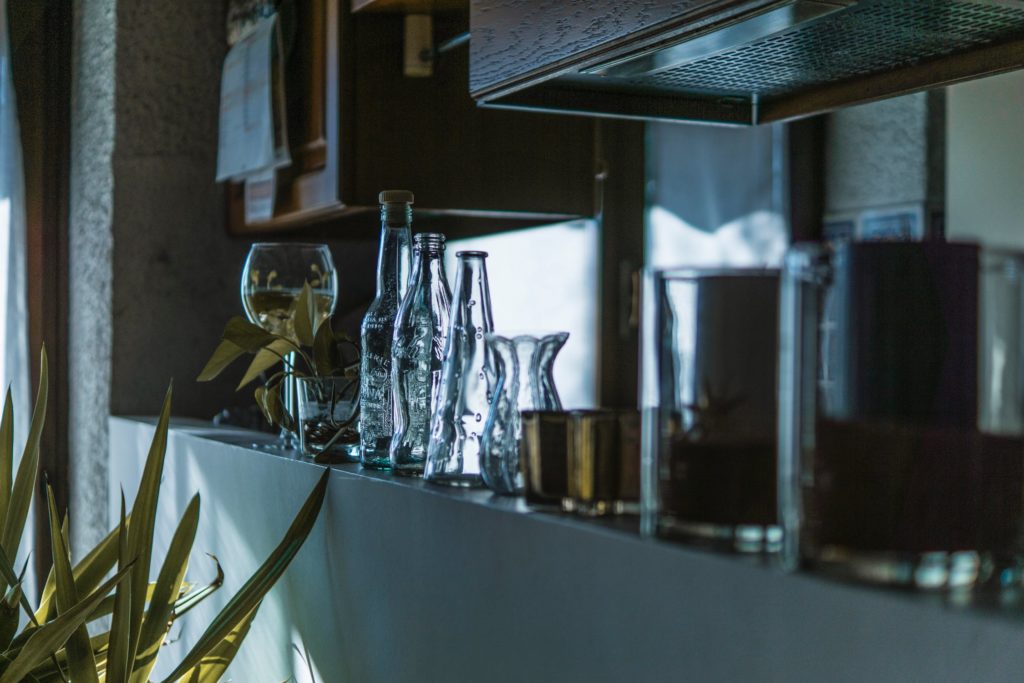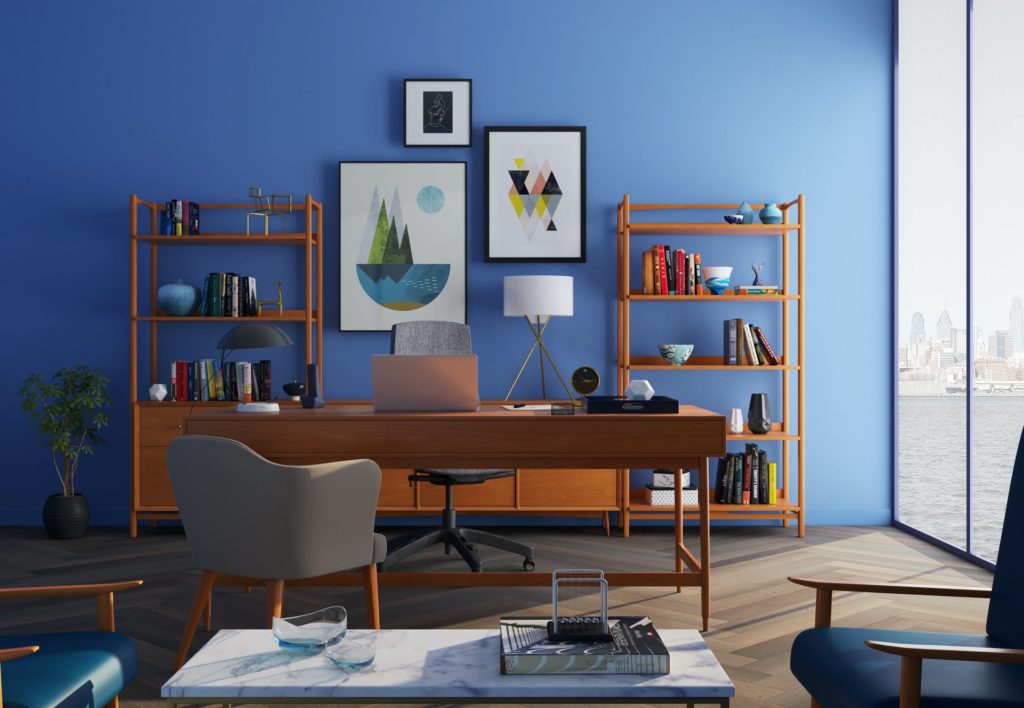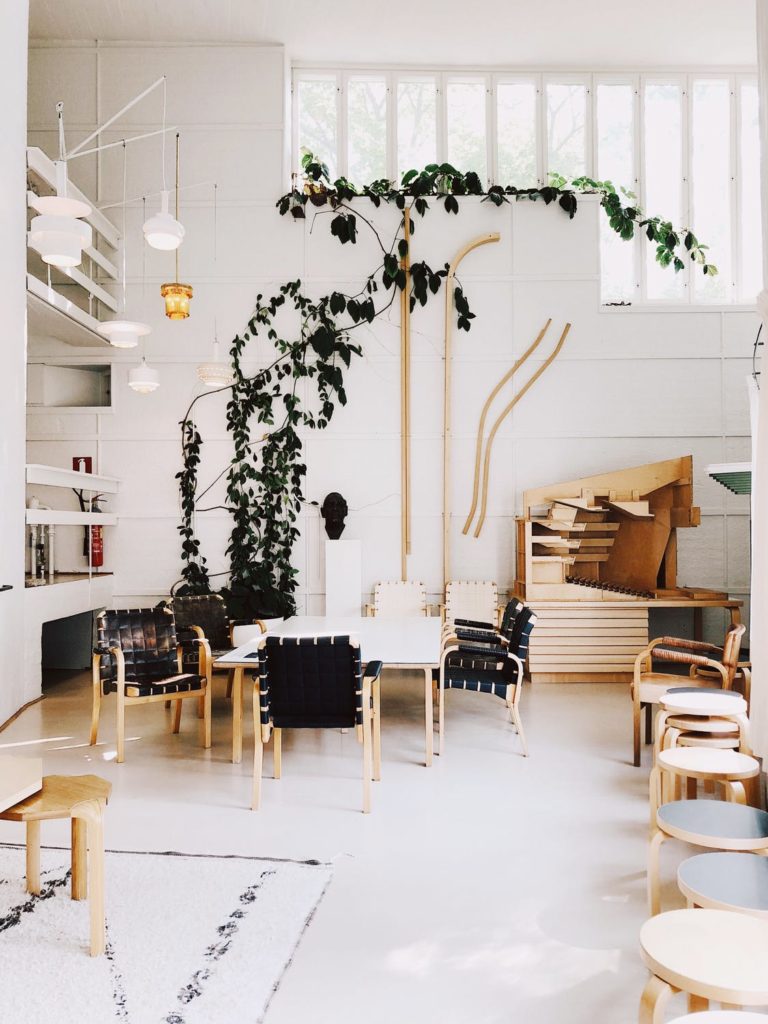You can have lots of fancy furniture and grand decor in your space, but a color scheme will either make or break its entire design. So before making any drastic changes to your wallpaper or throwing in some new shades, it’s key to apply the basics of color theory — which is the study of how colors function — into your home’s interior design. If you’re not quite sure where to start, here are some smart but simple strategies you can apply.
Understand What Colors Work Well Together
Picking out a color palette is easier said than done, as there’s an array of hues to choose from. Thankfully, this task doesn’t have to feel daunting at all. An effective trick to building a captivating palette is to draw inspiration from a particular piece in your room — like your favorite chair, or a statement sculpture. In our ‘Elegant & Cozy Home in Lavender’ post, we shared how the colors of one of our artworks guided interior designer Kerra Michele into crafting a sophisticated space.

On that note, why not have some fun by playing around with complementary colors? According to art writer Marion Boddy-Evans, complementary colors are shades that are opposite each other on the color wheel. Let’s say you’ve chosen an orange vase, pairing it with shades of blue will complement it beautifully. All in all, having a focal point helps you figure out which colors will work together in harmony.
Elevate Your Room with Dark Hues
Although light hues like white and beige are default choices, you should consider using dark colors to your design advantage — whether you’re splashing your shelves gray, or adding dark cabinets. True enough, dark kitchens were touted as one of autumn’s top interior design trends by HomeServe. This trend remains popular across the world not only because dark colors create a striking visual statement, but they also have the very practical feature of making stains less visible.
 Credit: Pexels
Credit: Pexels
If you find a classic black or charcoal to be quite intimidating, navy blue is a subtle yet stunning alternative to use, especially as a wall color. Indeed, HGTV Canada notes that its rich pigment adds depth to the walls, therefore creating an illusion of more space. Just remember, it’s important to have a little balance by adding light-colored elements into the room.
Add Some Flair with an Accent Wall
 Credit: Pexels
Credit: Pexels
Apart from being a tried-and-true design technique, accent walls are a fantastic way to breathe some life into a room. The key here is to apply an analogous color scheme. Again, consulting the color wheel, you’ll find that these shades are typically found beside each other. As explained by Elle Decor, it’s essential to apply the ’60-30-10 rule’ along with it. This means 60% of the color scheme is the base, while 30% is the accent, and 10% is a pop of color. In line with this, use that 30% for your accent wall so your selected hue blends effortlessly, instead of overpowering the others.
Pick Colors Based on a Room’s Personality
 Credit: Pexels
Credit: Pexels
Psychologist Steven Gans outlined how each color has its own meaning, which in turn can make a significant impact on your mood. Red signifies love or excitement, and it’s used to stimulate the mind and body. Meanwhile, blue stands for calm, so it can help evoke calming, relaxing feelings. With this in mind, you can be strategic when selecting colors for your room. Try to get a good feel of what vibe you’re going for. For instance, if you want your bathroom to be a truly soothing space, incorporating blue shades into your design elements will help you achieve this. But if you want a more sophisticated and luxurious atmosphere, then a neutral beige or ivory may be your best bet.


